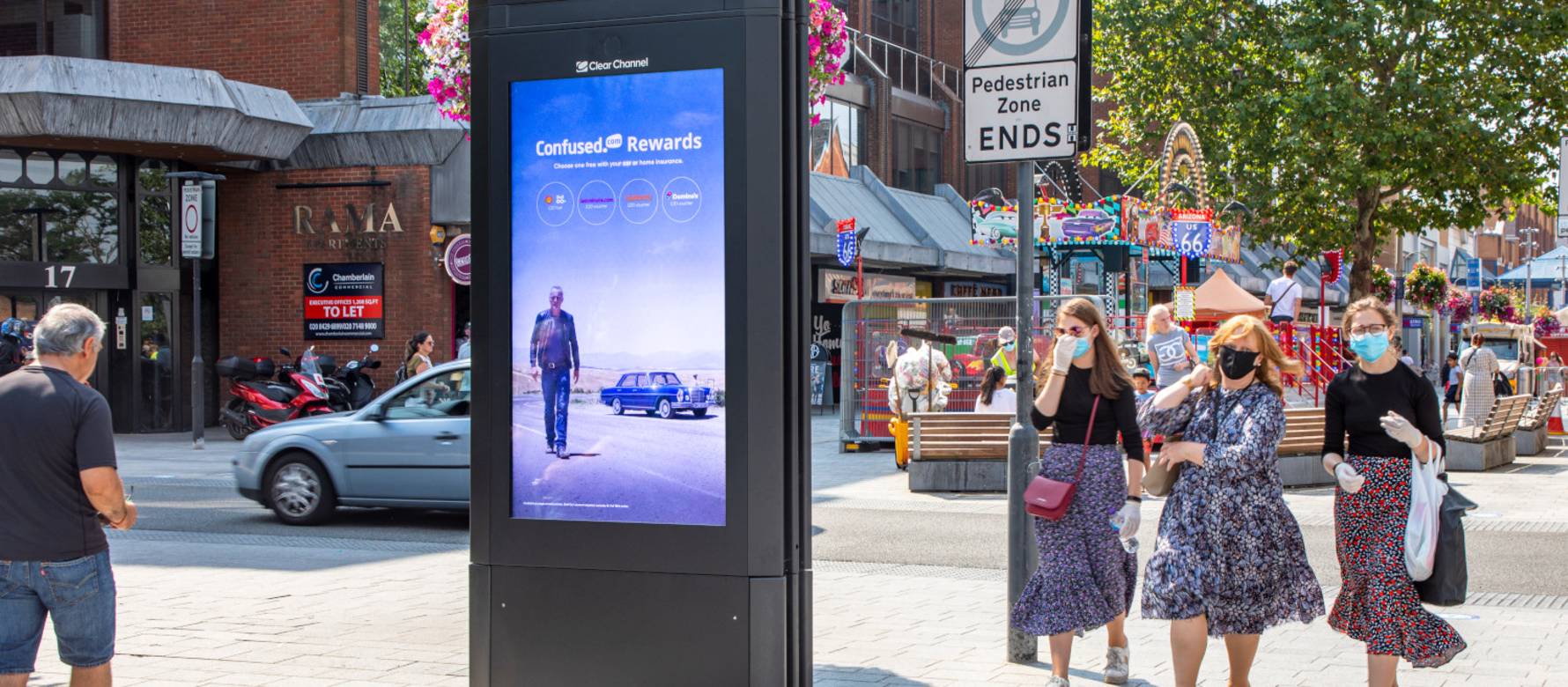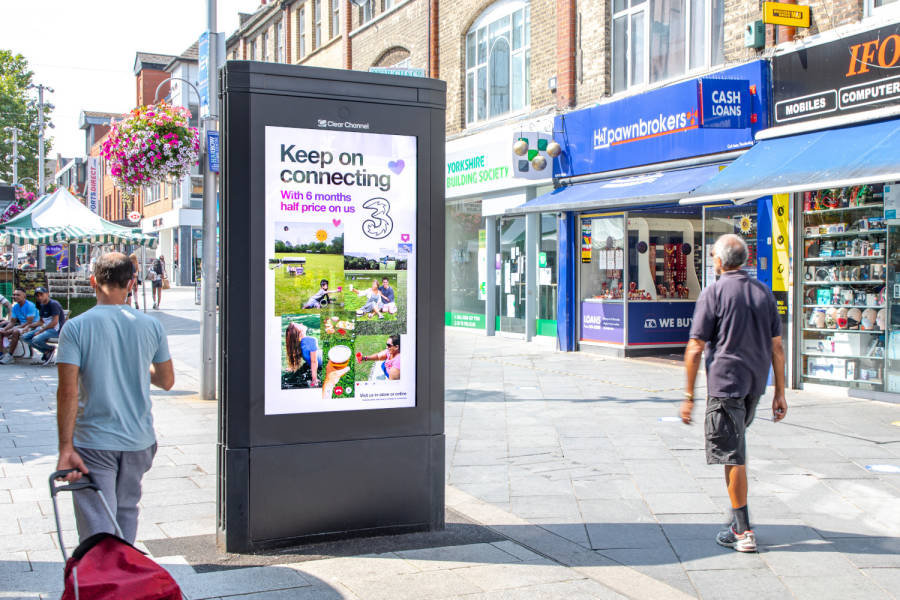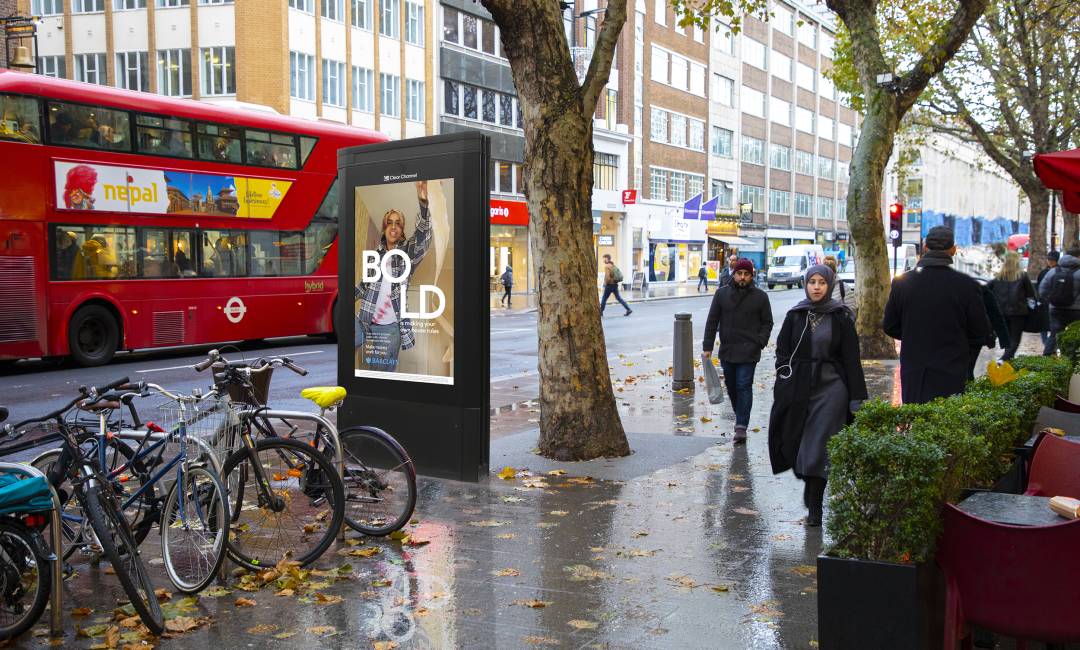What’s On Our RADAR - An Interview with Clear Channel’s Commerical Innovation Director, Andy Stevens
17 Aug 2020 / News
Andy Stevens, Commercial Innovation Director at Clear Channel International, explains what Clear Channel RADAR® is, and how it helps advertisers understand consumer behaviour while ensuring GDPR-compliance.
What is Clear Channel RADAR® and how does it work?
RADAR is a suite of tools we’ve developed at Clear Channel that uses anonymised mobile location data to better understand the audience groups that are passing by our panels. In Europe, we’re rolling out RADARView®, a campaign planning tool that we’ve designed to help advertisers plan their Out of Home (OOH) campaigns more effectively. The tool does this by showing what audience groups see each of our panels, allowing advertisers to choose the panels that are best suited to reach their target audience.
The data that powers RADAR is mobile data that is aggregated and fully anonymised by a third-party provider prior to being shared with Clear Channel. This means that, unlike in online advertising, no individuals are identified or targeted using RADAR. Instead, advertisers see groups of data based on audience attributes, such as age, income, and shops they go to. So, geolocation data allows us to understand who is exposed to our ads, in just the same way surveys have been used in TV.
It’s important that people understand this properly, so I’ll give a couple of examples to bring this to life. Using RADAR, a clothing brand could identify the best Clear Channel panels to reach 18-34-year old women who shop at high-street fashion brands, or a pram manufacturer could find the best panels to reach parents who recently visited a department store. Importantly, if any group of devices is too small (fewer than 25 people) and therefore there is a risk of identifying an individual, we don’t receive the data from the third-party provider. OOH is a broad reach channel best at engaging mass audiences, and we’re not in the business of targeting individuals.
Why is Clear Channel International launching RADAR in Europe now when it’s been available in the US for four years?
RADAR is the next step in our digital transformation journey in Europe, following the success we’ve seen with it in the US. The tool makes planning OOH campaigns more effective and unlocks the true power of our medium by better understanding the audiences our panels reach. With this information, we can help advertisers ensure they’re choosing the right panels to deliver the right message, to the right audience, at the right time. This is even more important today given people spend their time outdoors is constantly changing in light of the pandemic, as seen by our Return Audience Hub in the UK.
In fact, we’ve been working on this launch for the last couple years, but it’s taken some time to find the right data providers to partner with that have sufficient scale and also meet our stringent standards on data privacy and cybersecurity. I’m pleased that we’re now able to launch RADAR in the UK, Sweden, and Spain, with the ambition of having the tool available across all of our European markets within the next 24 months. However, it’s important to highlight that the US and European versions of RADAR aren’t exactly the same. All our RADAR platforms have been carefully designed to conform to local laws around data collection.
In Europe we’ve carefully chosen suppliers who have consent from individuals, effective anonymisation techniques, the ability to remove and alter data where needed (such as when samples are too small), and stringent data security processes. This means that all the data we use is as protected and anonymous as possible, while supporting more engaging campaigns.

How do consumers consent to their data being use for RADAR?
Consumers consent to their geolocation data being used for RADAR through the apps on their mobiles when they accept the T&Cs of those apps. We take compliance and data privacy very seriously, and all our data partners follow GDPR standards, which means people must to explicitly opt-in to have their data collected and have the ability to opt-out at any time.
We’re constantly monitoring changes to local laws and regulations to ensure we stay up-to-date and fully compliant at all points and across all the countries we operate in.
How can you measure audience behaviour after seeing a campaign if the data is grouped?
Just to be clear, this measurement feature is not currently available in Europe, however; it is possible to make measuring OOH campaigns more effective using RADAR by using the grouped data to understand the actions audiences take after seeing our panels.
This function may be rolled out in the future, but we’re not there yet in Europe. Nonetheless, it's important that people understand how this works properly. Firstly, the tool identifies which anonymous devices that had opted-in to data sharing were nearby during the campaign. RADAR then looks at the actions those devices took – for example going to the shop, or not going to the shop – and compares this with devices who didn’t pass the advert but went to the shop anyway. With these two sets of data, RADAR can demonstrate whether exposure to the campaign influenced a lift in product sales. However, this analysis is done by the data provider, who then groups and anonymises the data before sending it to Clear Channel, so we never see what an individual does – we only see the behavior of a group.
Another thing that is important to explain here is that all mobile data provided to Clear Channel for RADAR uses just a sample of the population. In the UK, for example, RADAR is run in partnership with AdSquare and powered by approximately 10% of the population’s anonymised mobile data from consenting individuals. We only need a sample of the population because we’re not trying to reach specific individuals with our medium. What makes OOH powerful is its mass reach; targeting individuals just isn’t an effective way to use billboards or bus shelter. However, what is effective is understanding the groups of audiences that walk past our panels to help advertisers reach the right people with the right messages and at the right time, while respecting individual privacy.
SHARE POST
PRESS ENQUIRIES




